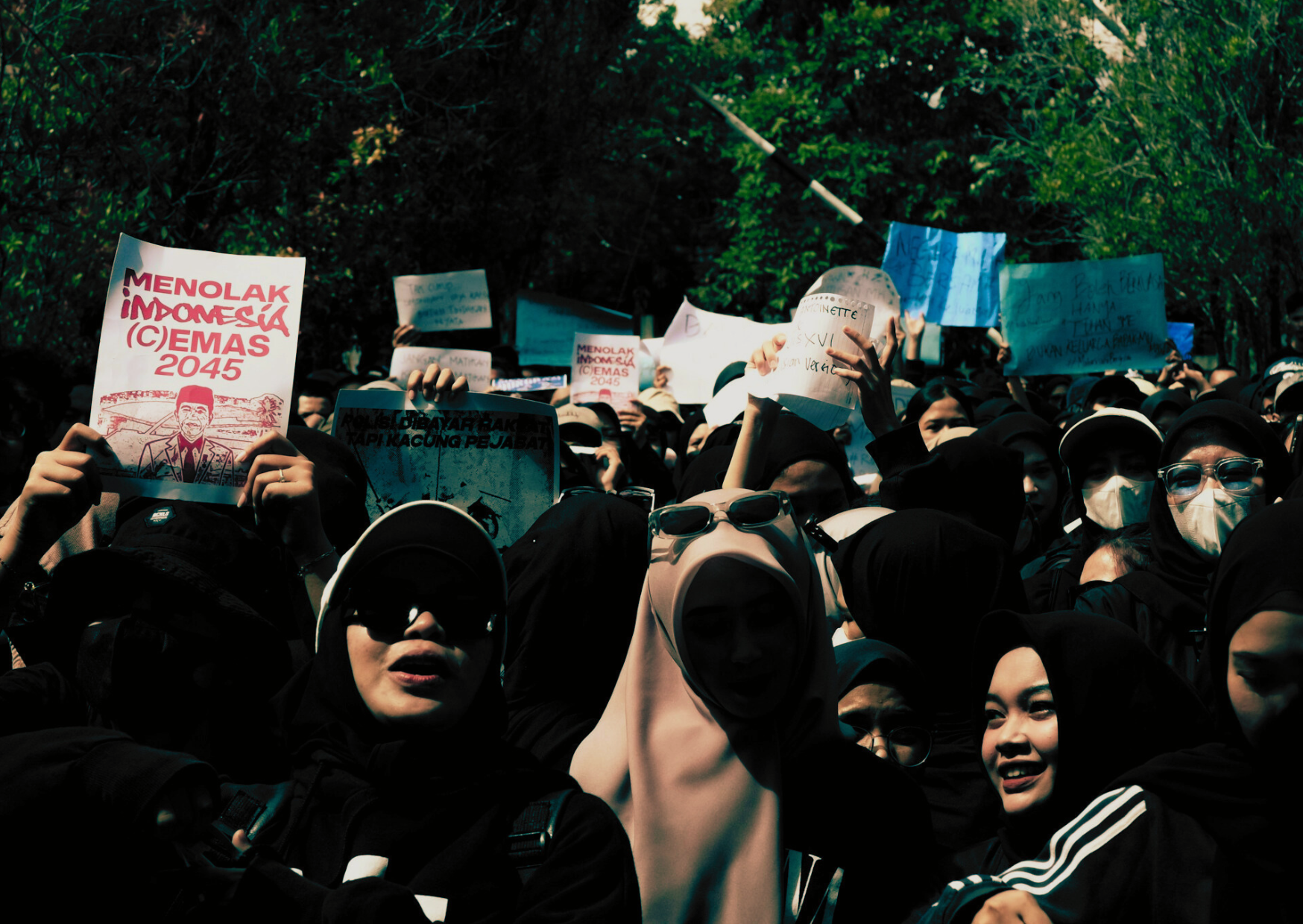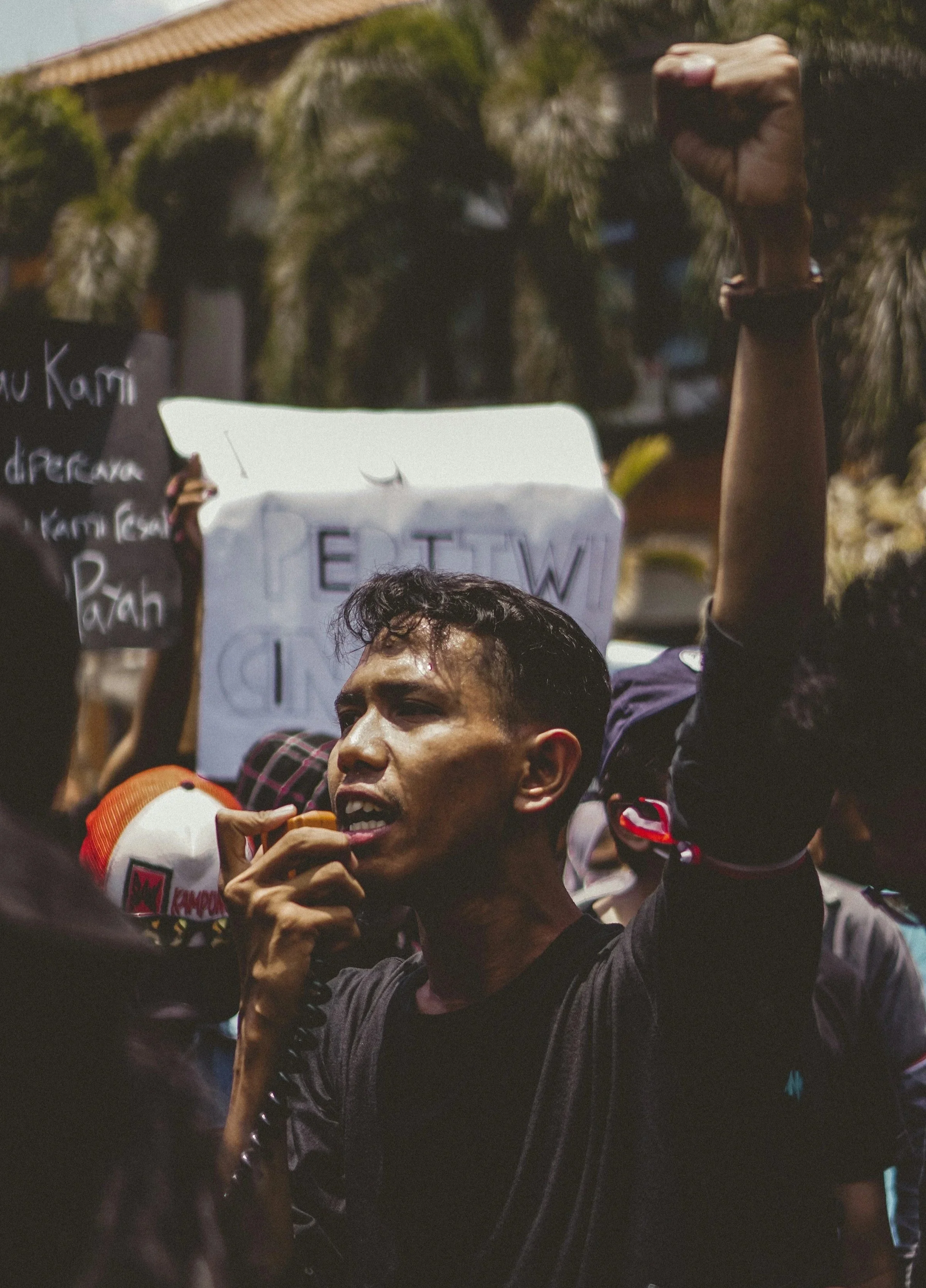People for democracy, states for impunity: Competing transnational solidarities in Southeast Asia
People for Democracy, States for Impunity:
Competing Transnational Solidarities in Southeast Asia
WRITTEN BY YATANA YAMAHATA
13 November 2025
In the digital age, social media connects people from all walks of life, allowing demonstrations to spread faster and farther than ever before — a phenomenon especially evident across Asia. During the 2010s, East Asia saw pro-democracy protests in Hong Kong and Taiwan. In the 2020s, anti-corruption protests challenged authoritarian elites across South Asia in Bangladesh, Nepal, and Sri Lanka. Although the grievances behind these demonstrations differ, both waves reveal a shared regional aspiration for democratic reform.
Social media networks have also fostered transnational solidarity, enabling people in one country to quickly learn about and publicly support struggles in another. Southeast Asia reflects this trend but with a distinctive twist: here, two forms of transnational solidarity coexist in tension. Democratic solidarity from below has been forged through transnational movements like the Milk Tea Alliance and SEAblings. At the same time, authoritarian solidarity from above has been sustained by the Association of Southeast Asian Nations’ (ASEAN) principle of non-interference, which allows member states to shield each other from accountability. These competing forms of transnational solidarity between the Southeast Asian people and their governments capture the region’s political landscape, where democratic aspirations are constrained by authoritarian impunity.
Democratic solidarity from below: Milk Tea Alliance and SEAblings
Discontent with authoritarianism and its ills has sparked demonstrations across Southeast Asia, where authoritarianism takes different forms across mainland and maritime states. Myanmar remains under military rule; Laos and Vietnam are single-party communist states; and Brunei is an absolute monarchy. Cambodia and Thailand are formally constitutional monarchies, though Cambodia functions under dynastic rule and Thailand has experienced repeated military and judicial interventions. By contrast, Indonesia and the Philippines have held regular elections following their democratic transitions, yet both continue to face significant and increasing democratic deficits.
Solidarity among Southeast Asians has strengthened pro-democracy movements across the region and, in doing so, fostered a sense of shared regional identity. ASEAN, however, does not mirror nor reinforce this solidarity. Instead, it remains constrained by its founding principle of non-interference.
Mostly led by Gen Z, pro-democracy movements in the region have intensified since the 2020s. In 2020-21, Thai youth protested the Constitutional Court’s dissolution of the Future Forward Party and called for broader democratic reforms, including reforming the monarchy and abolishing Article 112, the lèse-majesté law. Meanwhile, Myanmar’s 2021 coup triggered nationwide protests that have since evolved into unarmed resistance, such as the Civil Disobedience Movement, and armed resistance, including the People’s Defence Forces.
Amid these demonstrations in Thailand and Myanmar, pan-Southeast Asian solidarity emerged: two movements united in their fight against authoritarianism, mobilising both online and in the streets. Thailand and Myanmar joined the Milk Tea Alliance, a transnational network of protesters across Asia bound by a shared affinity for milk tea as well as a resistance against authoritarian regimes and Chinese influence perceived to be bolstering them. Through the alliance, online activists and street protesters have supported each other’s struggles, strengthening pro-democracy movements in their own countries. This saw Myanmar activists posting to support their Thai counterparts, demanding democratic reforms, and Thai protesters rallying in solidarity with Myanmar’s anti-coup demonstrations. The two pro-democracy movements have also drawn inspiration from each other as Myanmar protesters adopted Thailand’s three-finger salute as a symbol of defiance against the coup regime, while Thai protesters banged pots and pans in the style of their Myanmar counterparts.
In 2025, Gen Z-led protests erupted across Southeast Asia over widening inequality between political elites and ordinary citizens. In the Philippines, demonstrators denounced widespread corruption in government and the misuse of public funds, while in Timor-Leste, they opposed lifetime pensions for retired lawmakers. In Indonesia, protesters targeted the lavish allowances and privileges of parliament members. Clashes with the police resulted in several fatalities, including that of a young motorcycle taxi driver who was run over and killed by a police vehicle during a protest in Jakarta.
These protests marked a resurgence and renewal of pan-Southeast Asian solidarity, with people across the region collectively confronting shared challenges. Indonesia’s demonstrations, in particular, gained strong regional support, uniting netizens under the SEAblings movement — a blend of “Southeast Asia” and “siblings”. Across Malaysia, Thailand, and the Philippines, people showed solidarity by using delivery apps such as Grab and Gojek to distribute food and supplies to Indonesian motorcycle taxi drivers caught in the protests and others in need. The rapid spread of SEAblings is another example of distinct yet interconnected struggles of Southeast Asian people and the solidarity that binds them.
From the Milk Tea Alliance to SEAblings, the diverse people of Southeast Asia have transcended borders, rivalries, and other divisions to build transnational solidarity from below. This solidarity takes many forms: online advocacy, street protests, and even sharing food. Together, these grassroots acts weave regional consciousness and forge new ties, pointing toward the possibility of a Southeast Asian Spring.
Authoritarian solidarity from above: ASEAN and the principle of non-interference
Solidarity among Southeast Asians has strengthened pro-democracy movements across the region and, in doing so, fostered a sense of shared regional identity. ASEAN, however, does not mirror nor reinforce this solidarity. Instead, it remains constrained by its founding principle of non-interference.
Demonstration against the Criminal Code Law and the KPK Revision, at Singaraja, Bali. 2019. Image credit: Fajar Grinanda/Unsplash.
This principle limits ASEAN’s ability to respond to the domestic issues of its member states, even when those states undermine the organisation’s own commitments to democracy, the rule of law, and good governance. In theory, non-interference is designed to prevent stronger states from infringing on the sovereignty of weaker ones. In practice, it has often served as a justification for inaction. Non-interference has cultivated an environment of mutual impunity, which has, over time, evolved into authoritarian solidarity as member states evade accountability for the erosion of democratic norms and human rights abuses. Ultimately, this pattern further entrenches authoritarian regimes across Southeast Asia.
ASEAN’s limited response to the 2021 Myanmar coup has revealed how the principle of non-interference creates the conditions for transnational authoritarian solidarity. First, the principle normalises variegated responses among member states: Thailand continued ordinary diplomatic and economic relations with Myanmar, while Malaysia condemned the coup and urged the junta to implement a peace plan. Despite these varying degrees of engagement, the coup regime did not suffer any consequences, as none of the member states fully severed relations with it. Second, this fragmented approach between member states weakens ASEAN’s collective response as a regional bloc. Although it managed to issue a five-point consensus on the Myanmar crisis, it failed to take any concrete action to pressure the junta to put an end to all violence in the country. While ASEAN will not send an official observation mission to the upcoming December election, member states will likely be free to send their own observers, which could serve to legitimise the election.
These failures represent more than a weakening of ASEAN centrality; they reveal how the bloc shields authoritarian regimes and signal that violations of democratic norms and human rights will be tolerated — or, at the very least, not seriously challenged — within Southeast Asia. Even in its mildest form, the principle of non-interference conditions member states to refrain from criticising authoritarian governments. For example, the Philippines rejected a UN resolution calling for the release of detained former leader Aung San Suu Kyi and reiterated its support for Myanmar’s sovereignty in an attempt to deflect scrutiny from its own human rights record. At its most extreme, the principle of non-interference permits the suppression of dissent and facilitates transnational repression, as seen when Thailand forcibly returned refugees fleeing junta atrocities in Myanmar.
Although the ASEAN Community Vision 2045 aspires to build a “resilient, innovative, dynamic, and people-centred ASEAN,” the organisation has instead constructed a regional order defined by authoritarian solidarity from above. As long as member states continue to normalise authoritarian practices and hide behind ASEAN’s principle of non-interference, authoritarian legacies will remain difficult to dismantle. However, the ongoing movements — and the transnational solidarity they continue to generate — offer a glimpse of a more hopeful Southeast Asian future rooted in democracy and its principles.
The people of Southeast Asia deserve a regional framework that protects their rights, holds governments accountable, and fulfils ASEAN’s own promise of a people-centred community. To honour the commitments in its Charter and Community Vision, ASEAN must not only protect the people of Southeast Asia, but also uphold their democratic aspirations. This would pave the way for the transformation of a region defined by competing transnational solidarities to complementary ones.
DISCLAIMER: All views expressed are those of the writer and do not necessarily represent those of the 9DASHLINE.com platform.
Author biography
Dr Yatana Yamahata is an Associate Editor at 9DASHLINE. Image credit: Ya' Wahyu/Unsplash.

